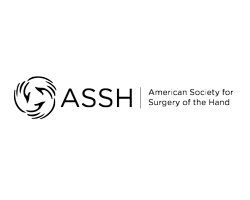Low Back Pain and Buttock - Pain Syndromes
Low Back Pain and Buttock – Pain Syndromes
New advances in understanding how peripheral nerves can cause low back and buttock pain syndromes has given hope to those who continue to suffer. Low back pain can come from several causes. Some of these issues are able to be fixed by spine surgeons.. The remainder of patients are often “managed” by physical therapy, medications, and injections. We have developed new treatment options for many patients, for whom this pain has become a way of life. Simple, outpatient operations are now available to permanently treat many of these causes of low back and buttock pain!
MIDLINE Low Back Pain
“Facet Joint” Arthritis Pain
Surgical Treatment: Joint Denervation
Up to 40% of all chronic low back pain is thought to be caused by inflammation and degeneration of the lumbar facet joints.
What does Facet Joint Pain feel like?
This pain is typically experienced as aching, deep, sometimes shooting pain in the middle of the lower back. It is worsened by bending backwards and twisting and is frequently relieved by bending forward and lying down. It is often felt most significantly when standing up from a seated position.
The spine bends in many directions and has multiple small “joints” that bear the weight of bending. Some of these are Facet Joints. Just like is common in knees and finger joints, arthritis is the result of inflammation from these joints wearing out. The patient is left with pain from the pressure of the bones rubbing together. Unfortunately, there is no replacement for the facet joints, like there is with the knee. Instead, the small nerves (medial branches) that carry the pain sensation from these areas can be targeted to reduce the discomfort. Previously, the only treatment for these nerves was ablation – treatment with radio waves from a needle – that provides only temporary interruption of the pain signals. Repeated injections are required once or twice a year and are usually performed by pain management physicians. Other temporary treatments include injection of steroids into the joints to decrease inflammation, and this option is frequently temporary as well.
How is Facet Joint Pain diagnosed?
Doctors at Neuropax Clinic will discuss your history of pain and the symptoms you are experiencing. The location of the pain is matched up with the possible sources with a simple examination. Finally, a nerve block may be recommended. This is a small injection of local anesthetic “numbing medicine” that is done in the office. If the pain is reduced by more than 50%, the patient may be a candidate for more permanent treatment with surgery.
What is Medial Branch Nerve Surgery?
A new technique has been developed with state-of-the-art surgical tools that can treat the pain more completely and more permanently – all while doing so through small endoscopic incisions! Techniques used by peripheral nerve surgeons like the ones at Neuropax clinic to treat pain by removing segments of nerves all over the body, are used to cut the small sensory nerves that go to the facet joints. We call this a joint denervation procedure. This can result in long-lasting or permanent improvement in low back pain. Recent clinical reports have documented significant improvement in pain with this straightforward outpatient procedure.
2 to 4 small incisions (less than 1 inch long) are made on the lower back, while the patient is under anesthesia. The surgeon places an endoscope (tiny tube with a camera on the tip) down onto the side of the spine to locate the Medial Branch Nerves, which carry the sensation of pain from the joints of the spine bones to the brain. Portions of these tiny nerves are then removed, thereby eliminating the pain signals from getting to the brain. The patient goes home the same day, with very few limitations in their activities and a quick recovery.
Pain on one or both SIDES of the lower back
Superior Cluneal Nerve Pain
Surgical Treatment: Excision and burial of the nerve
What does Superior Cluneal Nerve Pain feel like?
This pain is typically experienced as an aching, deep, sometimes shooting pain along one side of the lower back, beginning on the pelvis bone. It frequently can radiate into the buttock, or around the side to the hip area. Pressure on the bone above the buttock (like putting your hand in your back pocket) produces tenderness. It is worsened by bending forward at the waist.
There are small sensory nerves which go to the skin in this area that fan out from the spinal cord in the lower back. These Superior Cluneal Nerves travel out to the side and down over the buttock on both sides. As they pass through the muscles of the low back, and then over the bone at the back of the pelvis, they can become trapped and pinched, causing chronic pain. They may “flare up” at times due to muscle spasms or from sitting with pressure at this level.
How is Superior Cluneal Nerve Pain diagnosed?
Doctors at Neuropax Clinic will discuss your history of pain and the symptoms you are experiencing. The location of the pain is matched up with the possible sources with a simple examination. Finally, a nerve block may be recommended. This is a small injection of local anesthetic “numbing medicine” that is done in the office. If the pain is reduced by more than 50%, the patient may be a candidate for more permanent treatment with surgery.
What is Superior Cluneal Nerve Surgery?
Under anesthesia, an up-and-down incision is made 3 inches to the side of the spine, in the lower back. The Superior Cluneal nerves are easily found coming up through the muscle from the spinal cord. These damaged nerves are divided, resulting in a numb patch of skin over the lower back and the back of the hip in place of the pain. The numb patch decreases in size over the next 12 to 18 months. You are trading pain for numbness. There is no muscle function associated with these nerves. The operation is performed as an outpatient, with a short recovery period.
______________________________________________________________________________
Pain on one or both SIDES of the lower back and pelvis
Sacro-Iliac (SI) Joint Pain
Surgical Treatment: Joint Denervation or SI joint Fusion or both
What does SI Joint Pain feel like?
SI Joint pain comes from trauma or inflammation (arthritis) of the bones of the pelvis. The two large bones in the back of the pelvis flex against one another to a small degree. Like many other joints in the body, these joints can “wear out”, leading to chronic pain in the lower back and upper buttock. This pain is usually one-sided, and has an aching, deep quality to it in many cases. This cause for this pain is often overlooked or mis-diagnosed. Although physical therapy and/or steroid injections can sometimes cure the pain, occasionally the injury or inflammation in this area results in permanent, chronic low back pain.
How is SI Joint Pain diagnosed?
Like the other causes of low back pain, as above, the diagnosis is made in 3 steps – talking about your history of pain and the symptoms involved. A physical examination is most helpful in localizing the potential source of the pain. Finally, a local anesthetic block may be recommended. If the pain is reduced by more than 50%, the patient may be a candidate for more permanent treatment with surgery.
What is SI Joint Denervation Surgery?
All joints have sensory nerves that innervate the joint capsule to sense pain. Sometimes these nerves are injured or become chronically inflamed, and just never turns back off. When this happens, these nerves are doing more harm than good. Because they are only sensory nerves in non-crucial areas, they are essentially disposable. Meaning, the nerve can be excised, and normal function is not compromised. This denervation technique can be utilized for some types of chronic SI joint pain syndromes. The nerves that are evaluated and blocked are the Superior and Medial Cluneal nerves.
What is SI Joint Fusion Surgery?
One popular treatment for SI joint inflammation pain is to “fuse” the joint. Through small incisions, surgeons place pins between the two bones to prevent them from moving. This eliminates the pain in most cases. Although the technique is not new, new materials for the pins have been invented which increase the likelihood of success, while decreasing risks of complications.
____________________________________________________________________________
“Failed Back Surgery”
Persistent pain following spine surgery
Surgical Treatment: A blend of the techniques discussed above
I had surgery on my spine, but I have the same or new pain now. What happened?
Several possibilities exist for new or persistent pain following lower “lumbar” spinal surgery.
One potential cause follows spinal fusion. When the bones of the spine are fused (locked) together, the forces of twisting and bending motions are increased in other areas. The spinal bones above and below the fused level(s) (see section above regarding facet joints) as well as the bones of the pelvis (the SI joints – also see above) can bear the brunt of these forces instead and cause them to wear out sooner. It is also possible that these joints already contributed to the pain, which is not fixed with the spinal fusion surgery. These additional pain sources can be investigated and treated.
Another cause is scarring and injury to the small sensory nerves (Superior Cluneal Nerves – see section above) during the spinal surgery. Spine surgery, especially fusion, is a big operation. Getting access to the bones of the spine and putting in rods, cages and screws is no small undertaking! In doing so, several of the small nerves going to the skin can be damaged or caught up in scar tissue afterwards. Doctors at Neuropax Clinic are experts in locating new sources of pain following all types of surgery – especially low back pain!
Diagnosis and treatment of low back pain after spine surgery
The cause of the pain and recommended treatments are described in the sections above. This is usually straightforward, and the solutions can be dramatic and long-lasting



















